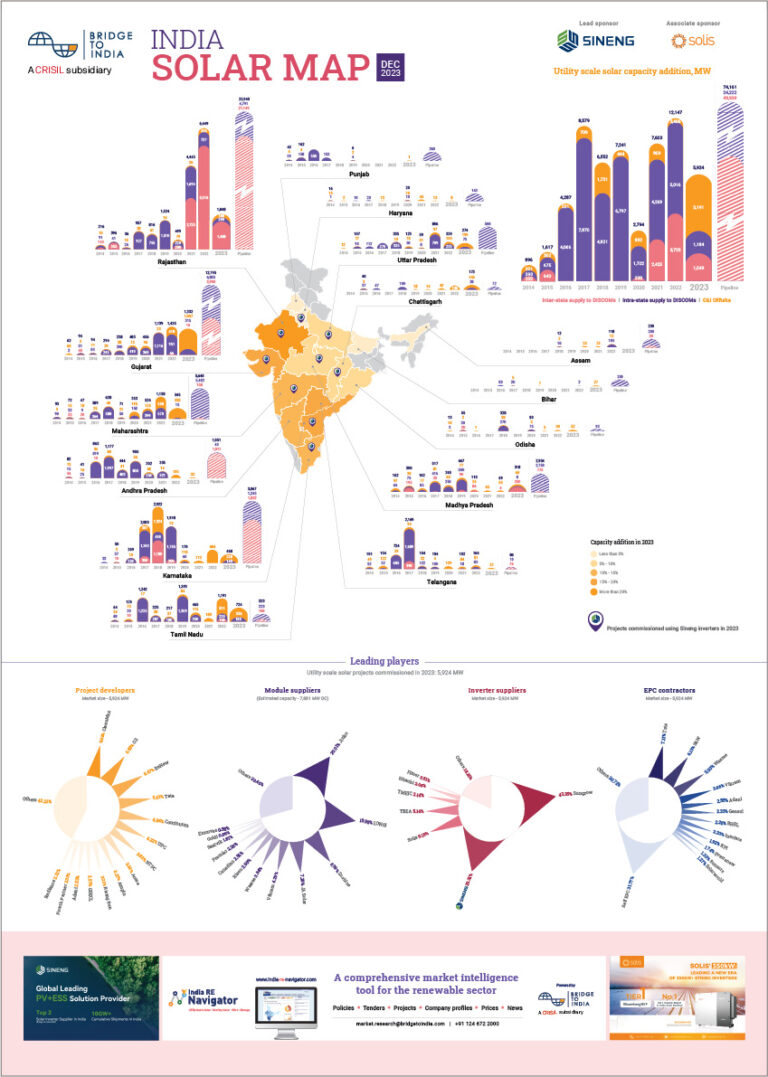Here’s wishing all our subscribers a very happy new year. We hope that the new year brings good health and better tidings all around. Last two years have been tough for the sector with sharp cost rises, COVID, extensive project delays, muted power demand, worsening of DISCOM financial position and Supreme Court order on moving high voltage transmission lines underground. Our early estimate for total capacity addition in 2021 is 11.2 GW, split between utility scale solar – 7.8 GW, rooftop solar – 1.8 GW and wind – 1.6 GW, 30% below our projection for the year. As we look to the new year, good news seems to be in short supply unfortunately as third wave of COVID rages around and cost pressures look set to continue. Here’s how we expect the new year to unravel.
Levy of Basic Customs Duty (BCD)
A final announcement on BCD is expected as part of budget release on 1 February 2022. While there is still some uncertainty in the timetable with MNRE being sympathetic to developer demands for delaying imposition of duty, we understand that the duty is set to be levied, as expected, from April 2022 onwards. If that happens, the distributed solar business – both rooftop solar and open access – would take an immediate hit. Utility scale solar projects, already stuck because of the Supreme Court’s transmission order, would also be impacted adversely because of negative cash flow impact.
Only gradual relief in module and other input prices
The softening process in module supply chain has already begun. But there is still considerable uncertainty on power supply situation in China and global demand is expected to pick up sharply with 2022 shipment estimates ranging between 170-220 GW. Any decline would most likely therefore be slow and relatively small. We expect mono-PERC module prices to ease off to about USD 0.25 levels by end of the year. Meanwhile, other commodity prices are expected to stay firm.
Feeble capacity addition
Capacity addition prospects would depend greatly on timeline for clarity on transmission lines in Rajasthan and Gujarat. Many projects have already got force majeure relief on account of module supply disruption. We estimate total 2022 renewable capacity addition at about 10 GW, down 10% YOY.
No major change on auction and tariff front
SECI finally began to clear backlog in unsigned PPAs towards the end of last year. Barring the 5 GW CPSU tender and 2.5 GW conventional hybrid tender, where we anticipate relatively little progress, total project allocation in 2021 stood at 15.4 GW, down 42% YOY. We expect pace of new auctions to stay relatively lukewarm and bid tariffs for central government offtake projects to stay in the INR 2.10-2.40 range. A key event to look out for in the year would be progress on the 1 GWh standalone storage tender by SECI.
‘Make in India’ boost
Clarity on BCD and proposed expansion of PLI scheme to cover all bidders would provide big boost to domestic manufacturing efforts. It would be a major change to see industry nucleus shifting away from project development to manufacturing although we expect only about 8-9 of the 16 bidders to finally go ahead with their proposed plans because of overcapacity and viability/ financing concerns. Battery and electrolyser manufacturing schemes are expected to be take much longer to take off.
Tightening in financial markets
The US Fed has just signalled liquidity tightening in response to high inflation and booming economy. Globally listed renewable stocks have already tumbled. Financing conditions are expected to become significantly more challenging with higher cost of capital across the board.
End to PPA renegotiation efforts
It has been nearly 30 months since Andhra Pradesh sought to renegotiate and/ or terminate all renewable PPAs. The case has been stuck in the High Court for multiple reasons but due for final hearing in January. It is widely expected to be resolved in favour of the developers. We believe that Punjab’s renegotiation attempt should also fail after a successful legal challenge by the developers.
Sector reforms
After dithering over many years, can the government gain political will needed to implement much needed sector reforms? The Electricity Act amendments are still awaiting Cabinet approval and even though the DISCOM financial position is becoming unsustainable, we expect another year of muddling through.












